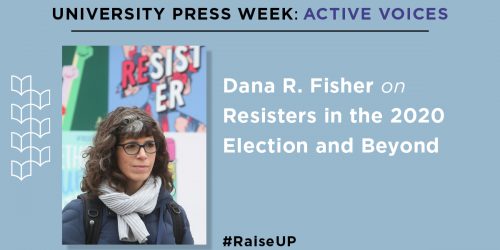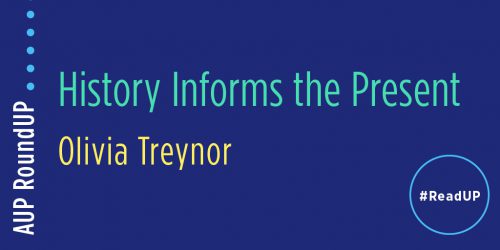University Press Roundup

Welcome to our weekly roundup of the best articles from the blogs of academic publishers! As always, if you particularly enjoy something or think that we missed an important post, please let us know in the comments. (And look back at our University Press Roundup Manifesto to see why we do this post every Friday.)
In a recent post on Cambridge University Press’s blog, Alexander Hill, author of Writing the Red Army and the Second World War, reflects on his writing process. Hill was required to examine a number of memoirs, testimonials, and primary sources in order to gain an all-encompassing perspective on the Soviet period and the collapse of the Soviet Union. In this post, Hill addresses the challenge of incorporating historical voices into one’s original arguments and how he’s grown to appreciate primary sources in a new way. “When used appropriately the human interest material can tell us so much for example about what motivated those involved to do what they did, with patterns starting to emerge when reading many examples even if we have always to be on the lookout for what seems to be retrospective explanation and justification.” Memoirs allowed Hill to better understand the human experience with regards to war and suffering. Engaging with these texts was a “humbling experience” for Hill, who hopes that his publication’s prioritization of memoir literature not only provides historical context for his work, but also engages and excites his readers.
Princeton University Press’s blog features an interview with Eléna Rivera on Scaffolding , her recently published collection of sonnets, inspired by her life in New York City. The title of her collection is influenced by the façade work that affected her building complex. “Scaffolding” gradually grew into a term to explain the sonnet, something that communicates substance and sound. Rivera’s interest in sonnets stems from her fascination with the relationship between form and content and how the inner and outer play off of one another. “I really became fascinated by the fourteen-line form, what such a compact container could give rise to, and once I committed myself to it I felt compelled to continue.” Rivera’s process in composing her poetry is evident in her usage of dates to label many of her sonnets. “Some poems just worked right away and others were more reluctant. Sometimes I liked the new version as much as the old one and kept both. I wanted to track that.” When asked about the inclusion of French and Spanish words in her poems, Rivera points to her family background, as she grew up speaking French and Spanish to her parents. “Sometimes I just can’t think of the word in English, and the word in French or Spanish will emerge — so much more expressive of the emotion or thought than the English word.” Rivera’s relationship with English is “complicated,” but writing poetry gave Rivera a voice. “Writing was always a necessity that helped me to live in the world. Writing was a way out of erasure, the silence that is imposed from the outside. In writing and reading, I found the words that I didn’t have otherwise.”
Where do the arts and mental health intersect? Oxford University Press’s blog investigates the role of contemporary dance in helping with mental illness. The post focuses on the work of the Alchemy Project. “The mission was for dance to be a catalyst for radical change, helping to realise the potential of individuals. The teaching methodology is all about engaging and inspiring people struggling in their lives and it is innovative, holistic, and focuses on wellbeing rather than deficits.” The project investigated the role of contemporary dance in learning how to establish physical contact with others. This process is aimed at combating the feeling of isolation that one may experience with a mental illness. The results of this project were quite positive, with participants learning to work together to accomplish a common goal. “The project is amazing because it taps into and improves all of these skills. It isn’t just about a four week project, and then ‘brilliant you’ve improved, and now we’re going to leave you.’”
University of Pennsylvania Press’s blog features a post on Henry Ansgar Kelly’s latest book, The Middle English Bible: A Reassessment. This book examines the historical foundations of the translation of the Old and New Testaments from Latin into English. The post focuses on the contributions of the Wycliffite Bible, “the most successful writing in the English language to come out of the Middle Ages.” “The medieval Scripture translation was a great religious and literary achievement, and it is high time to recognize it for what it was, a nonpartisan attempt to make the word of God more understandable to more people. A good first step towards its rehabilitation, I suggest, would be to give it an appropriate name, and call it the ‘Middle English Bible,’ or MEB.”
In light of the fiftieth anniversary of the Middle East Studies Association (MESA), Stanford University Press’s blog features a post that commemorates the history of Middle East studies as an academic field. Middle East studies gained its footing after Rockefeller and Carnegie provided grants for a Middle East studies program at Princeton. This program, however, was met with much skepticism, as it was unclear whether or not it could “overcome its philological and classical legacies and develop what they had by now come to regard as a proper area studies program for the Middle East, which in their view entailed focusing on the modern and contemporary periods and on social science research.” Therefore, Middle East studies programs were implemented at other academic institutions, as well. Middle East studies became an established component of U.S. higher education during the decade and a half after the end of the Second World War, with the help of the 1958 National Defense Education Act. There is no way to account for the full history of the development of Middle East studies; however this post aims to remind readers that “we need to pay close attention to the institutional visions and decision-making that shaped these new fields, but also to refrain from treating them (and the knowledge they produced) simply as epiphenomena of the Cold War. The trajectories of area studies (and of Middle East studies) in North America were shaped by many contingencies and much contention, and the histories of these fields have been replete with unrealized visions and unanticipated consequences.”
University of Washington Press’s blog features an interview with Michal Engelhard, author of Ice Bear: the Cultural History of an Arctic Icon. This book, featuring more than 160 color illustrations, traces the history of the relationship between humans and polar bears and the perception of polar bears as magnificent yet terrifying creatures. Our fascination with the “Ice Bear” stems from the similarities that exist between humans and polar bears. “They are big, charismatic top predators living in one of Earth’s most unforgiving environments. They are symbolic of the Arctic, one of the last frontiers of the human imagination.” Although polar bears are known to be ruthless creatures, Engelhard explains that their ferocious nature helps them to survive in a harsh environment. His investigation of these majestic creatures has taught him more about our tendency to immortalize polar bears based on our own projections and insecurities. “I only now realize the degree to which they have been instrumentalized, how we always have molded them to fit our agendas. With all the symbolic ballast and history, it is hard, perhaps even impossible, to see them objectively.”
Thanks for reading! As always, we hope that you enjoyed the links. Please let us know what you think in the comments!




